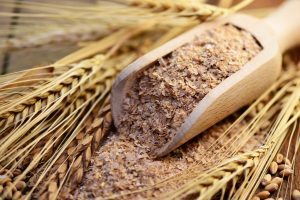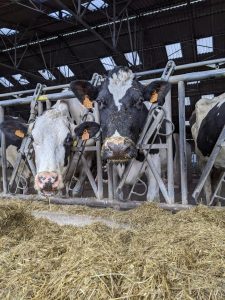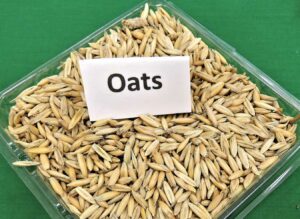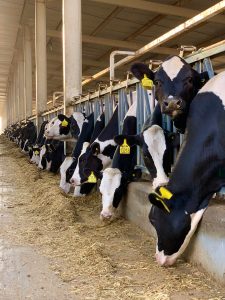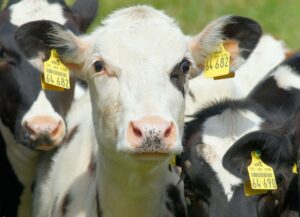Álvaro García
Milk rarely makes headlines as a food safety risk, and for a good reason. Behind its reputation for wholesomeness lies a rigorous system of sanitary controls that begins at the farm and continues all the way to the consumer’s refrigerator. Among the most fundamental, and still most effective, practices that safeguard milk are cooling and pasteurization. Both practices remain as relevant today as ever, especially since renewed debates about raw milk consumption and public trust in food safety systems.
The evolution of milk handling and safety
Before the 1880s, no U.S. farm had access to electricity. Cooling milk, an essential modern practice, was achieved through creative, low-tech methods. Farmers often lowered milk buckets into wells or stored them in cellars, relying on ambient coolness to preserve freshness. While they may not have understood the microbiological principles involved, they clearly observed that cooler milk soured more slowly and retained desirable qualities longer. In essence, they were practicing food safety by tradition, guided more by experience and sensory outcomes than by science.
The widespread availability of electricity didn’t arrive until the 1930s, when initiatives like President Franklin D. Roosevelt’s Rural Electrification Administration helped modernize the countryside. Electrification, along with the rise of motor vehicles, enabled bulk milk transport and reduced handling time and contamination risks. By the 1950s, bulk tanks replaced traditional milk cans, allowing for consistent on-farm cooling. While these advances were transformative, cooling alone wasn’t enough.
Milk, even when chilled, is a nutrient-rich medium. Bacteria in cold milk are not killed; they are simply dormant. Once warmed either during handling or upon entering the human digestive system, they can quickly multiply. While healthy adults may tolerate limited exposure, young children, the elderly, pregnant women, and immunocompromised individuals are far more vulnerable to milk-borne pathogens.
Recognizing this risk, public health pioneers in the late 19th century turned to pasteurization as a means of protecting consumers. At the time, raw milk was linked with up to 25% of all foodborne disease outbreaks in the U.S. Nathan Straus, a German immigrant and philanthropist, led one of the earliest campaigns for safe milk by funding the Pasteurized Milk Laboratory in New York in 1892. His initiative focused on providing pasteurized milk to children to reduce infant mortality. At the time, child death rates were around 15% nationally, but in New York, where pasteurization was adopted early, mortality fell to 7% by the early 1900s.
Straus’ advocacy proved revolutionary. Pasteurization (heating milk to a specific temperature for a defined period) dramatically reduced the prevalence of diseases like tuberculosis, brucellosis, diphtheria, and typhoid fever. This simple yet powerful intervention saved hundreds of thousands of lives and laid the groundwork for the modern food safety systems we rely on today.
A generation removed from risk
Today, milk is no longer a leading cause of foodborne illness, and many consumers have forgotten, or never learned, the reasons behind that progress. This generational disconnect may help explain the recent resurgence of interest in raw milk. Between 1973 and 1992, outbreaks linked to raw milk averaged 2.4 per year in the U.S. Between 1993 and 2006, that number more than doubled to 5.2 per year. And the trend continues. A 2012 study by the Center for Disease Control (CDC) study found that illness linked to raw milk, or its products were 150 times more likely than that associated with pasteurized milk. Even more telling, children under five accounted for most cases, 76% had been served raw milk directly from a farm, often from relatives. In one Minnesota study spanning 2001 to 2010, 3.7% of patients with gastrointestinal infections had consumed raw milk. Alarmingly, 21% of infected children developed hemolytic uremic syndrome (HUS), a life-threatening complication of E. coli O157 infection, resulting in at least one death.
More recently, in 2024, the CDC investigated a multistate outbreak of E. coli O157:H7 infections linked to raw cheddar cheese made from unpasteurized milk. The outbreak affected 11 people across five states, with five hospitalizations and two cases of hemolytic uremic syndrome. The outbreak was traced to a single brand and resulted in a nationwide recall. This illustrates that, even today, unpasteurized milk products pose a real and recurring public health risk.
And crucially, the CDC noted that these official outbreaks may just be the tip of the iceberg. In the Minnesota study, sporadic infections linked to raw milk consumption were found to be 25 times more common than those reported through outbreak surveillance.
A risk to dairy’s trusted reputation
Some argue that mandatory pasteurization laws infringe on personal freedom. But public health regulations, like seatbelt requirements, exist not to punish, but to protect. Pasteurization is not a relic of the past; it remains a scientifically valid method for preventing serious, sometimes life-threatening, foodborne illnesses. This proven safety measure has helped sustain trust as one of the most valued elements of the dairy industry. For decades, this trust has been earned through consistent safety, quality, and transparency. But it is also fragile. As fluid milk consumption continues to decline in the U.S., every outbreak tied to raw milk threatens to undermine consumer confidence, not just in raw milk, but in all dairy products. In a time when food systems are under increasing scrutiny, maintaining that trust is more important than ever.
In today’s marketplace, milk safety is not a static achievement, it is an evolving responsibility. New technologies are advancing rapidly, from real-time microbial monitoring at the processor level to blockchain-enabled traceability systems that ensure transparency across the supply chain. Cold chain logistics are also improving, helping preserve quality from the farm to the consumer.
Meanwhile, researchers are exploring non-thermal alternatives to traditional pasteurization such as high-pressure processing (HPP) and UV light treatment, that show promise in preserving flavor and nutrients. However, while these innovations offer exciting potential, they are not replacements for pasteurization when it comes to reliably eliminating pathogens. In this context, pasteurization continues to serve as the essential safeguard that upholds not just public health but also the reputation of dairy itself.
Pasteurization and rapid cooling have turned milk into one of the safest and most trusted foods in the modern diet. But as new generations grow further removed from the days of milk-borne epidemics, it’s vital to reaffirm the science and history behind these practices.
Milk safety does not happen by accident. It is the result of decades of scientific progress, public health policy, and responsible stewardship by producers. While innovation in dairy processing evolves, pasteurization remains a reliable and necessary tool for ensuring safety.
© 2025 Dellait Knowledge Center. All Rights Reserved.




